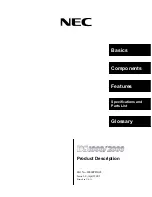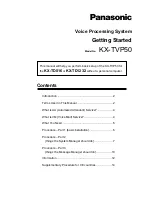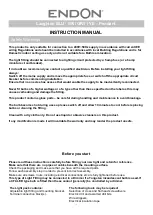
2-4
Chapter 2
Hardware Descriptions
Local Control Processor Card (LCP2)
The Local Control Processor (LCP2) card is installed in the dedicated processor slot 10 of
each expansion cabinet and does not reduce the available universal card slots of that
cabinet. The LCP2 card has positions for three daughterboards (refer to the table below).
The first daughterboard position (LOC1)
can support an MFM or RCM2.
The second daughterboard position (LOC2)
can support an MFM, RCM2 or MISC.
The third daughterboard position (LOC3)
can support an MFM or RCM2.
LOCAL CONTROL PROCESSOR (LCP/LCP2) DAUGHTERBOARDS
Position
Type of Daughterboard Allowed
LOC1
MFM or RCM2
LOC2
MFM, RCM2 or MISC
LOC3
MFM or RCM2
NOTE:
1.
Only one of any given type of daughterboard may be installed on any one LCP2 card
(e.g. only one MFM can be installed on one LCP2).
2.
The LCP contains 4MB of DRAM.
PROCESSOR CARD DAUGHTERBOARDS
There are seven types of daughterboard that fit on the processor cards. Some
daughterboards will work only on the MCP2; others will work on any processor card. Each
daughterboard is described below.
NOTE: Not all daughterboards are available in all countries.
Switch and Conference Module (SCM)
This daughterboard installs on the
MCP2
or the
SCP2
processor card.
In a single cabinet system
the SCM can be installed in position LOC1, LOC2 or LOC3.
In a multiple cabinet system
the SCM must be installed on the
SCP2
card because the
MCP2 must have the ESM board installed. Regardless of size, the system can only support
one SCM daughterboard. Adding an SCM daughterboard to the system increases the
number of conference paths in the system from 6 to 24. In addition, the SCM also adds 12
DSPs for DTMF and tone detection.
y
12 DSPs for DTMF and tone detection
y
18 conference paths (for a system total of 24)
















































